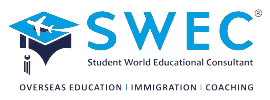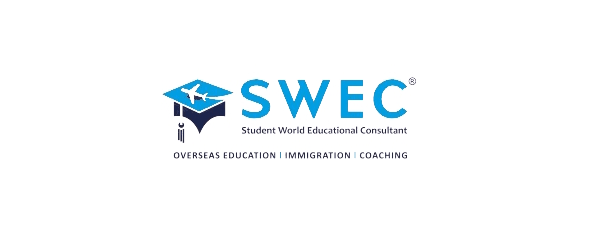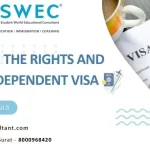The USA offers various dependent visa categories to allow family members of visa holders to accompany them. These visas play a crucial role in family reunification and provide dependents with specific rights and benefits. Choosing the right dependent visa is essential for a smooth immigration process, as each category has different eligibility requirements, work rights, and restrictions. This guide will explore the major USA-dependent visas, including H-4, F-2, L-2, J-2, and K-2 visas, their eligibility criteria, and key benefits.
What is a USA Dependent Visa?
A USA-dependent visa allows the spouse and/or children (under 21 years old) of a primary visa holder to join them in the United States. These visas enable dependents to live in the USA, with varying degrees of access to work, education, and travel privileges.
Who Qualifies as a Dependent?
- Spouses (legally married partners) of primary visa holders.
- Unmarried children under the age of 21.
- In some cases, stepchildren and adopted children may also qualify.
Rights and Restrictions for Dependent Visa Holders
- Work Authorization: Some dependent visas allow employment, while others do not.
- Study Rights: Dependents may have full or restricted study rights.
- Travel Flexibility: Most dependent visa holders can travel in and out of the USA, provided their visa remains valid.
Types of USA Dependent Visas & Their Eligibility Criteria
Each dependent visa category serves a different purpose and has distinct eligibility requirements. Below is a comparison of major USA-dependent visas, their eligibility, and key benefits.
A. H-4 Visa (For Dependents of H-1B Visa Holders)
Who Can Apply?
- Spouses and unmarried children (under 21) of an H-1B visa holder.
Key Features:
- Work Eligibility: H-4 visa holders can apply for an Employment Authorization Document (EAD) if the H-1B visa holder has initiated the Green Card process (I-140 approved).
- Study Rights: Can enrol in full-time education programs at any level.
- Travel Rules: Free to travel in and out of the USA, as long as the H-1B visa is valid.
B. F-2 Visa (For Dependents of F-1 Student Visa Holders)
Who Can Apply?
- Spouses and unmarried children (under 21) of an F-1 student visa holder.
Key Features:
- Work Eligibility: No work authorization is allowed under F-2 status.
- Study Rights:
- Spouses cannot study full-time but can take recreational or part-time courses.
- Children can attend primary and secondary schools.
- Travel Rules: Can travel in and out of the USA but must maintain a valid visa status.
C. L-2 Visa (For Dependents of L-1 Intra-Company Transfer Visa Holders)
Who Can Apply?
- Spouses and unmarried children (under 21) of an L-1 visa holder.
Key Features:
- Work Eligibility: Spouses can work without an EAD (as per 2021 rule changes).
- Study Rights: No restrictions on enrolling in full-time education programs.
- Travel Rules: Can travel internationally without needing additional approval.
D. J-2 Visa (For Dependents of J-1 Exchange Visitors)
Who Can Apply?
- Spouses and unmarried children (under 21) of a J-1 exchange visitor.
Key Features:
- Work Eligibility: J-2 visa holders can apply for an EAD to work in the USA.
- Study Rights: No restrictions on studying full-time at any level.
- Travel Rules: Some J-2 visa holders may be subject to a two-year home residency rule after completing their stay in the USA.
E. K-2 Visa (For Children of K-1 Fiancé Visa Holders)
Who Can Apply?
- Unmarried children (under 21) of a K-1 fiancé visa holder.
Key Features:
- Work Eligibility: Can apply for an EAD after arriving in the USA.
- Study Rights: Can enroll in any educational institution.
- Green Card Process: Must apply for permanent residency (Green Card) after the parent marries the US citizen.
Why Choose SWEC for USA Dependent Visa Assistance?
Applying for a dependent visa requires careful planning and understanding of immigration rules. At SWEC Visa, we provide expert guidance on:
- Selecting the right dependent visa category.
- Preparing and submitting visa applications with complete documentation.
- Understanding work and study rights for dependents.
- Navigating complex visa regulations and requirements.
Our dedicated visa consultants ensure a smooth and stress-free process for your family’s USA immigration journey. Contact SWEC Visa today for professional assistance in securing your USA-dependent visa!
For expert visa assistance, trust SWEC Visa, your reliable partner in dependent visa solutions!
Key Differences Between H-4, F-2, L-2, J-2 & K-2 Visas
When applying for a USA-dependent visa, it is crucial to understand the key differences between each visa type. The eligibility criteria, work authorization, study rights, and travel privileges vary across different dependent visas. Below is a detailed comparison of the H-4, F-2, L-2, J-2, and K-2 visas.
Comparison Table: H-4 vs. F-2 vs. L-2 vs. J-2 vs. K-2 Visas
| Feature | H-4 Visa (H-1B Dependent) | F-2 Visa (F-1 Dependent) | L-2 Visa (L-1 Dependent) | J-2 Visa (J-1 Dependent) | K-2 Visa (K-1 Fiancé Dependent) |
| Primary Visa Holder | H-1B Work Visa | F-1 Student Visa | L-1 Work Visa | J-1 Exchange Visa | K-1 Fiancé Visa |
| Work Authorization | ✅ Allowed if I-140 (Green Card Process) is approved | ❌ Not allowed | ✅ Allowed (No EAD needed) | ✅ Allowed (EAD required) | ✅ Allowed (EAD required) |
| Study Rights | ✅ No restrictions | ❌ Limited (Only part-time for spouse) | ✅ No restrictions | ✅ No restrictions | ✅ No restrictions |
| Travel Rights | ✅ Allowed | ✅ Allowed | ✅ Allowed | ⚠️ May be subject to a 2-year home residency rule | ✅ Allowed |
| Green Card Eligibility | ✅ Dependent on H-1B holder | ❌ No direct path to Green Card | ✅ Possible (through L-1 visa holder) | ✅ Possible (dependent on J-1 status) | ✅ Must apply after the parent’s marriage to a US citizen |
Detailed Breakdown of Key Differences
1. Work Authorization
- H-4 Visa: Work is only permitted if the primary H-1B visa holder has an approved I-140 petition for a Green Card. Without this, H-4 visa holders cannot work.
- F-2 Visa: No work authorization is granted under any circumstances. Dependents cannot engage in paid employment.
- L-2 Visa: Spouses of L-1 visa holders can work in the USA without applying for an Employment Authorization Document (EAD), making it one of the most flexible dependent visas.
- J-2 Visa: Work is allowed, but dependents must apply for an EAD before beginning employment.
- K-2 Visa: Work is permitted after applying for an EAD, but the dependent must adjust their status after their parent marries the US citizen sponsor.
2. Study Rights
- H-4 Visa: No restrictions on full-time or part-time education, making it an excellent option for dependents who wish to study in the USA.
- F-2 Visa: The spouse of an F-1 visa holder cannot enrol in full-time studies but can take part-time or recreational courses. However, children on F-2 visas can attend school.
- L-2 Visa: No restrictions on education. Dependents can enrol in any educational program, including higher education.
- J-2 Visa: No restrictions on study. J-2 dependents can enrol in school or university programs.
- K-2 Visa: No study restrictions. Dependents can attend school or college as per their eligibility.
3. Travel Rights
- H-4 Visa: Dependents can travel freely as long as their visa remains valid.
- F-2 Visa: Dependents can travel internationally but must maintain valid visa status.
- L-2 Visa: No travel restrictions and visa holders can enter and exit the USA freely.
- J-2 Visa: Some J-2 visa holders may be subject to a two-year home residency rule, requiring them to return to their home country before applying for another visa.
- K-2 Visa: Travel is permitted, but the dependent must maintain a valid K-2 status.
4. Green Card Eligibility
- H-4 Visa: Can apply for a Green Card, but only if the H-1B visa holder is in the Green Card process.
- F-2 Visa: No direct path to a Green Card; the F-2 visa is strictly tied to the F-1 student visa.
- L-2 Visa: Dependents can apply for a Green Card if the L-1 visa holder is pursuing permanent residency.
- J-2 Visa: Green Card eligibility depends on the J-1 visa holder’s status. Some J-1 programs require a two-year home residency before applying for a Green Card.
- K-2 Visa: After the K-1 visa holder (parent) marries their US citizen sponsor, the K-2 dependent can apply for a Green Card.
How to Choose the Right Dependent Visa for Your Situation?
Selecting the right dependent visa depends on multiple factors, including work eligibility, education plans, and long-term immigration goals. Consider the following key aspects before making a decision:
1. Do You Need Work Authorization?
- If yes, then L-2, J-2, or K-2 visas are the best options, as they allow dependents to work.
- If no, and the primary goal is to accompany the visa holder without employment, F-2 or H-4 (without I-140 approval) are suitable options.
2. Do You Plan to Study Full-Time?
- If you want unrestricted access to education, H-4, L-2, J-2, and K-2 visas allow dependents to study freely.
- If your primary visa holder is an F-1 student, note that F-2 spouses cannot pursue full-time studies.
3. What Are Your Long-Term Residency Goals?
- If you want to pursue a Green Card, H-4 (if H-1B is on a Green Card path), L-2, and K-2 visas provide better opportunities.
- F-2 visas do not lead to a Green Card, making them less ideal for long-term residency.
4. Comparing Benefits & Restrictions Based on Personal Circumstances
- If your goal is to work and study freely, the L-2 visa is the best option due to its unrestricted employment and education access.
- If you are joining a student visa holder, the F-2 visa is your only option, despite its strict work and study limitations.
- If you are accompanying a temporary exchange visitor (J-1), the J-2 visa provides more flexibility than other dependent visas.
- If you are a child of a K-1 fiancé visa holder, the K-2 visa is the only visa option that leads to a Green Card after the parent’s marriage.
Application Process for USA Dependent Visas
Applying for a USA-dependent visa involves several essential steps. Following the correct procedure ensures a smooth application process and increases approval chances.
Step-by-Step Guide to Applying for a USA Dependent Visa
✔️ Step 1: Determine Eligibility
Each dependent visa has specific eligibility criteria based on the primary visa holder’s status. Ensure you qualify for the correct visa type (H-4, F-2, L-2, J-2, or K-2) before applying.
✔️ Step 2: Complete the DS-160 Online Nonimmigrant Visa Application
Fill out Form DS-160 accurately. This form collects personal details, visa-related information, and travel history. After submission, print the confirmation page for your visa interview.
✔️ Step 3: Pay the Visa Fee
The visa application fee varies based on the visa category. Payment is required before scheduling the interview. Keep the receipt as proof of payment.
✔️ Step 4: Schedule an Interview at the US Embassy/Consulate
Book a visa interview appointment at the nearest US embassy or consulate. Visa interviews are mandatory for most dependent visa applicants (except for minors and certain exemptions).
✔️ Step 5: Gather and Submit Required Documents
Prepare a comprehensive document set to support your visa application:
- Valid Passport – Must be valid for at least six months beyond your intended stay in the USA.
- Proof of Relationship – Marriage certificate for spouses, birth certificate for children.
- Financial Support Proof – Bank statements, sponsor’s income proof, employment verification.
- Medical Insurance (if applicable) – Required for J-2 visa holders and recommended for others.
✔️ Step 6: Attend the Visa Interview
At the interview, consular officers will ask about your relationship with the primary visa holder, financial stability, and travel intentions. Answer confidently and provide all requested documents.
✔️ Step 7: Await Visa Approval and Processing
After the interview, visa processing takes anywhere from a few days to several weeks. You may track your application status online.
Common Challenges in Getting a USA-Dependent Visa
Many applicants face difficulties during the visa application process. Below are common challenges and solutions to overcome them.
? Incomplete or Incorrect Documentation
- Missing marriage or birth certificates can lead to visa delays or rejections.
- Solution: Ensure all required documents are collected, translated (if necessary), and verified before submission.
? Insufficient Financial Proof
- A weak financial record, such as a low bank balance or lack of income proof, may result in visa refusal.
- Solution: Provide recent bank statements, salary slips, and a financial support letter from the sponsor.
? Gaps in Relationship Verification
- If the consular officer doubts the authenticity of the relationship, they may reject the visa.
- Solution: Present wedding photos, joint bank account statements, or other evidence of cohabitation.
? Errors in Application Forms
- Incorrect details in Form DS-160 or discrepancies in the visa interview can affect approval.
- Solution: Review all forms carefully and seek professional guidance if needed.
✔️ Solution: Get expert assistance from a trusted visa consultant like SWEC Visa to ensure an error-free and successful application.
Conclusion
USA-dependent visas come with different rights and restrictions, making it essential to select the right one based on work eligibility, study options, and travel permissions.
✅ Understanding visa requirements helps applicants avoid common mistakes.
✅ Strong documentation and financial stability improve approval chances.
✅ Choosing the correct visa category ensures compliance with US immigration laws.
? Need expert assistance with your USA-dependent visa application? SWEC Visa provides professional guidance for a smooth and hassle-free process. Contact us today! ?






